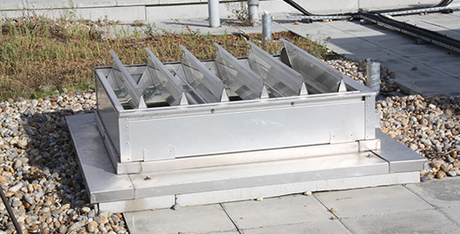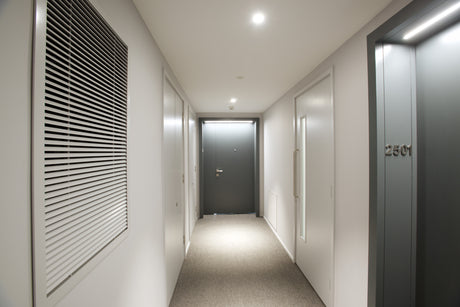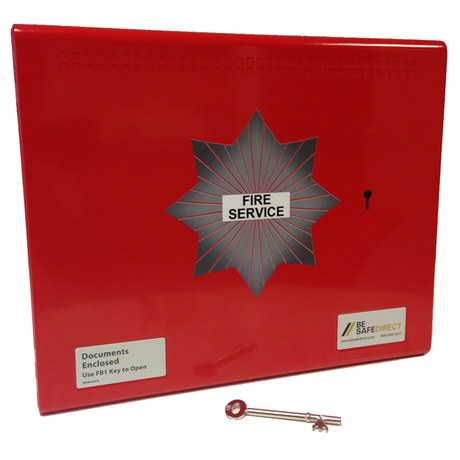Car park designs can be complex with many elements to consider when deciding on the appropriate smoke ventilation strategy. This mini guide looks at the role smoke venting plays when it comes to fire safety, the factors to take into account and options available.
Smoke venting's role in fire safety
Smoke inhalation poses the greatest threat to life in the event of a fire and can be particularly dangerous in enclosed spaces such as an underground car park. Smoke also causes significant issues for the firefighters dealing with the fire and can slow their progress through a building.
For these reasons, smoke venting plays a key role in maximising safety, clearing smoke during and after the fire. However, it can also help to:
- control smoke temperatures
- stop smoke spreading between floors
- limit damage to the car park structure
- control air quality in basement car parks
Offering clear, smoke-free access for firefighters, they can tackle the seat of the fire and ensure the means of escape is protected.
Key issues to consider when selecting car park ventilation systems
While it is not obligatory for standard ventilation systems used in residential and commercial spaces to work for environmental purposes on a day-to-day basis, car park ventilation systems must accommodate working daily in order to maintain a suitable overall air quality. The systems exhaust pollutants, gases and fumes produced by vehicles to ensure a safe environment for users. Once the carbon monoxide level in the car park reaches a certain limit, the venting systems can be activated.
How is the car park designed and what regulations should be adhered to?
Generally above ground level, open-sided car parks provide the least resistance to the passage of smoke and pollutants, allowing them to dissipate with little outside influence.
Car parks that are located above ground that are enclosed must adhere to a natural ventilation approach. In addition, some below ground car parks may be suitable for a natural approach providing they meet specific criteria. Approved Document B (ADB) and Approved Document F (ADF) of the Building Regulations state that car parks that are not open sided require vents with permanent openings (which can be at ceiling level) at each car parking level. ADB requires an aggregate free vent area not less than 1/40th of the floor area at that level, of which at least half should be split equally and provided between two opposing walls (1/160thon each side). Further to this ADF requires a further 1/40th that can be distributed throughout the car park.
Car parks that do not meet the requirements for ADB and ADF, but still some have some means of ventilation can be incorporated with a hybrid ventilation system. This means they must still need to achieve 2.5% on opposing walls, though now with the inclusion of induction fans to enhance airflow within stagnant areas (subject to CFD analysis). Where hybrid systems are not feasible, a fully mechanical ventilation system within the car park is required.
Mechanical ventilation is typically used in fully enclosed and basement car parks. In these situations, Building Regulations recommend that a system should provide six air changes per hour (ACH) for day-to-day ventilation on all levels and 10 ACH on the fire floor in the event of a fire breaking out.
The chosen solution also needs to have the capability of operating at temperatures of up to 300øC for 60 minutes, and ductwork and fixings should be made from materials that have a melting point above 800øC.
What smoke ventilation options are available?
The type of system needed for a car park depends entirely on its design, with three main types available.
Natural smoke ventilation systems
Using the passive forces of wind and thermal buoyancy - the process of hot air rising to draw in colder, denser air, Natural Smoke Ventilation Systems provide a safe escape route for a building's occupants, and the attending fire services. Usually found in above ground car parks, they also make use of airflow through the space to reduce the level of pollutants in the air to an acceptable level.
Offering a cost-effective solution to meet a project's smoke ventilation requirements, these systems consist of permanent openings on each level of the car park. Approved Document B states that of the minimum vent area (equivalent to 1/40th of the floor area) at least half of this area (1/80th) should be split equally and placed on two opposing walls (1/160th on each side).
Hybrid systems
Where natural smoke venting can't be achieved, for instance for design reasons or where the open areas of the car park don't meet the minimum criteria, powered systems can be used to provide ventilation in addition to the natural openings.
Hybrid systems are based around the use of impulse or induction fans to improve the cross-flow of air through the structure and are suggested under ADF as a way of clearing day-to-day carbon monoxide (CO) build-up. Enhanced Hybrid systems are also available and are designed to also operate in the event of a fire to provide smoke ventilation. To determine if the car park can be successfully ventilated via a hybrid system, CFD analysis must be used. By doing so, the location of the induction fans can be identified, thus ensuring that the car park does not contain stagnant areas of air.
Mechanical Smoke Ventilation
Mechanical Smoke Venting Systems (MSVS) provide the greatest level of performance for both smoke removal in a fire scenario and CO clearance, thanks to their increased efficiency over natural or hybrid systems.
By using CO detectors, MSVS automatically activates when CO levels rise above a pre-set limit to ensure a concentration of 30 parts per million (ppm) over an eight-hour period is not exceeded. Once levels exceed this threshold the system's extraction fans activate automatically, returning air quality to an acceptable standard.
The speed of the main extraction fans depends on the levels of CO detected. Between 30ppm to 49ppm, air will move throughout the car park at an exchange rate of three air changes per hour. Over 50ppm the exchange rate will increase to six air changes per hour. To meet the required standards for smoke extraction, mechanical systems must achieve at least 10 air changes per hour. Full smoke exhaust mode utilises an increase in both the impulse or induction fan and the main exhaust fan.
Why seek out technical support?
Achieving a safe and compliant car park smoke venting solution is always the priority. By seeking out expert advice on the systems and components required, the scheme can be both cost-efficient and effective too.
If you require any compliance or technical advice for your next car park install, call our expert team on 01322 388830 or email support@inbuilduk.com.







